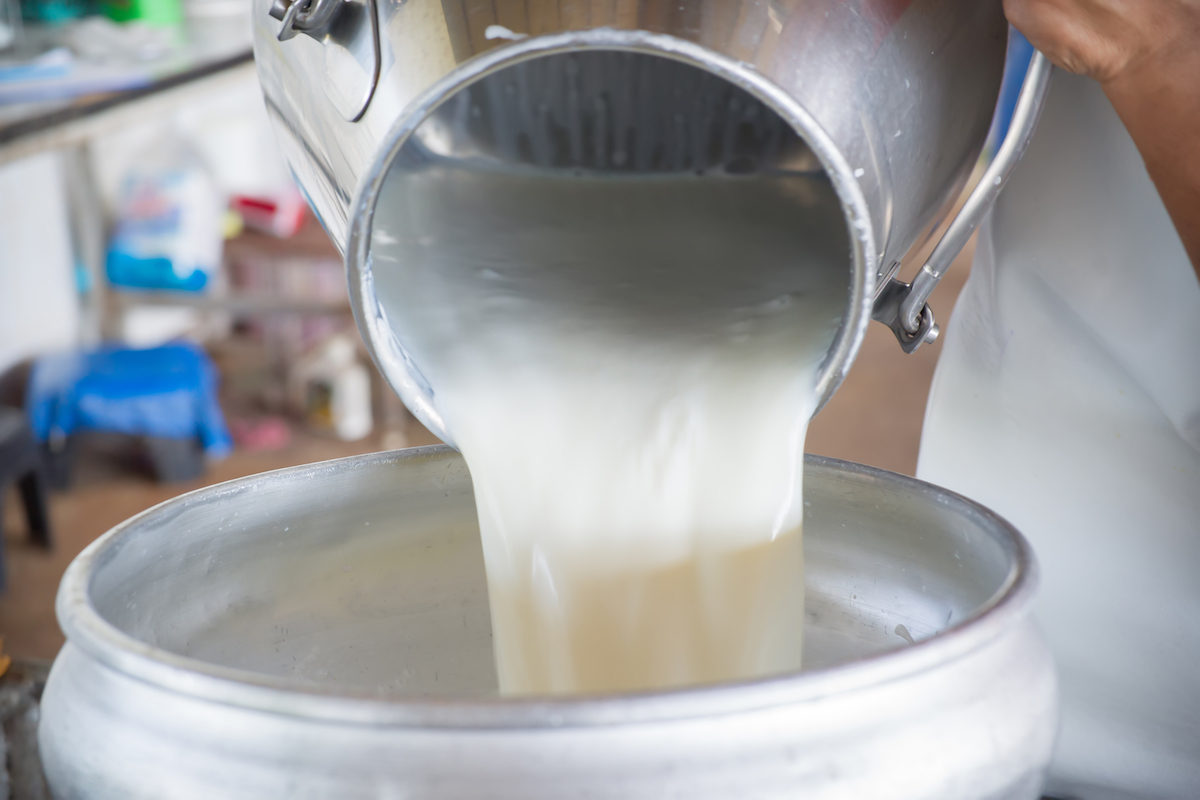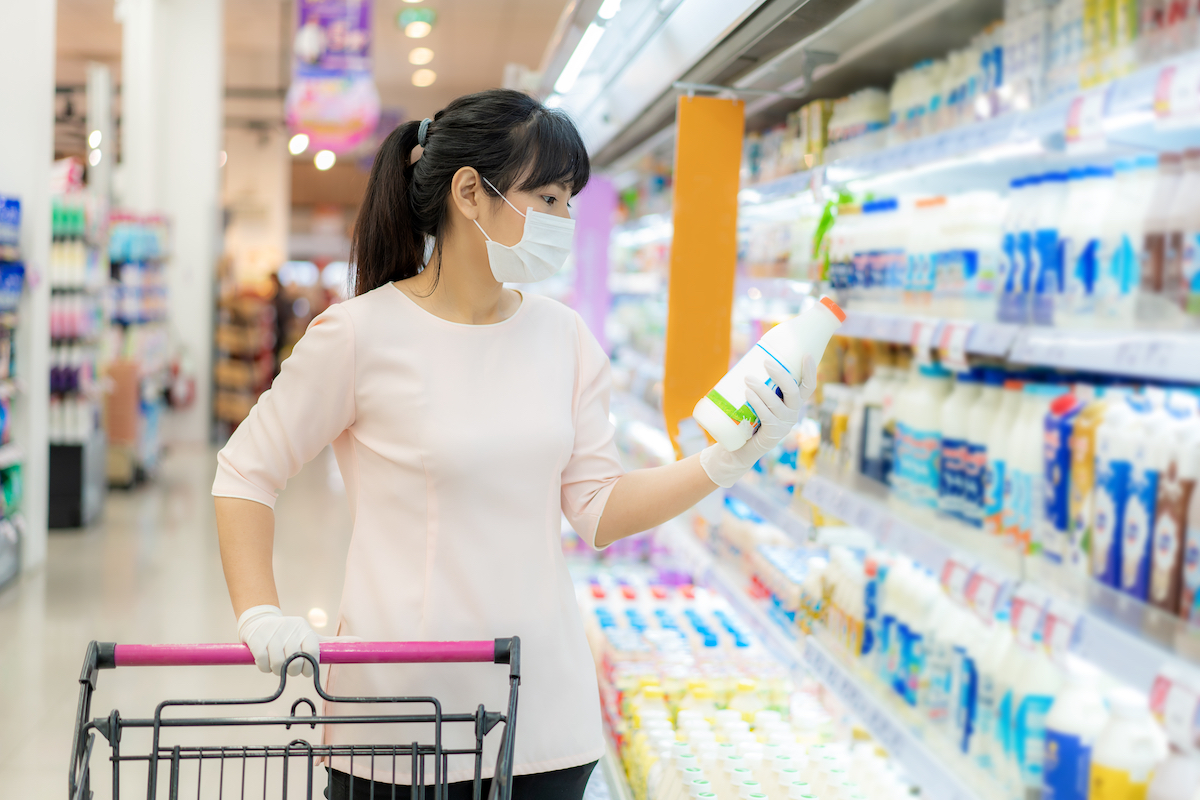Raw milk may come from cows, sheep, goats, buffalo, or horses. It essentially goes straight from the animal to the bottle, with no process in between. The process of pasteurization—heating milk to a high enough temperature for long enough to kill the germs within it—developed in the 1920s in response to widespread outbreaks of tuberculosis, scarlet fever, typhoid fever, and other diseases that were transmitted by milk, the CDC reports. By the 1950s, it was widespread practice in the dairy industry. And for one particular milk to avoid at the moment, check out If You Have This Milk in Your Fridge, the FDA Says Get Rid of It Now. The CDC’s advice about the risks of contamination with raw milk is pretty clear. “Getting sick from raw milk can mean many days of diarrhea, stomach cramping, and vomiting,” they explain. “Some people who drank raw milk have developed severe or even life-threatening diseases, including Guillain-Barré syndrome, which can cause paralysis, and hemolytic uremic syndrome, which can result in kidney failure, stroke, and even death.” The CDC further advises that illness can occur even when the same brand and source has previously appeared to be safe, and that unpasteurized milk can result in outbreaks from Brucella, Campylobacter, Cryptosporidium, E. coli, Listeria, and Salmonella. While everyone can get sick from contaminated milk, the risks are especially pronounced for young children, pregnant women, and anyone whose immune system is weakened due to conditions like HIV or cancer. And for more food safety news delivered right to your inbox, sign up for our daily newsletter. The CDC notes that the amount of a nutrient like vitamin C is reduced in the pasteurization process, which is one of the reasons some people promote consuming raw milk. Advocates for raw milk also talk of it having a different flavor to its heat-treated counterpart, which changes with the seasons and promotes healthy bacteria in your gut. A 2007 study from the Institute of Social and Preventive Medicine at University of Basel, Switzerland also found that European and Amish communities report lower instances of asthma and other allergies in children raised on raw milk, but that link hasn’t be proven. Raw milk is also a way for consumers to directly support local dairy farms. “Dairy is an incredibly consolidated system. The farmer has no bargaining power,” wrote Judith McGeary, an attorney and board member with the Farm-to-Consumer Legal Defense Fund, in a 2019 article on Civil Eats. “Raw milk provides this polar opposite; you have this product in high demand by consumers who value it, and all that profit goes to the farmer.” And for more food-related news you need to know, find out why The CDC Is Warning You Not to Eat This One Kind of Cheese. The regulation of raw milk sales fall under local state laws, with each area restricting sales to different degrees, according to the Farm-to-Consumer Legal Defense Fund.ae0fcc31ae342fd3a1346ebb1f342fcb In 10 states—including California, Washington, New Mexico, and Utah—raw milk can be sold in retail stores. In 16 states—including Wyoming, Texas, Pennsylvania, and Illinois—raw milk can be sold directly from farms. A handful of states, including Mississippi and Kentucky, only allow the sale of raw goat milk—and some still require a doctor’s prescription to purchase it. Another eight states, like Colorado and Michigan, allow herd-share programs, where consumers can combine resources to purchase a dairy cow. But in a few states, like New Jersey, raw milk is banned entirely. No matter your state’s laws, next time you’re buying milk, the CDC says you should carefully check the label to look for proof of pasteurization because “raw milk can be a home for bacteria and other germs that can cause people to become ill,” they say. And for more on consumer safety, check out If You Have This Soap at Home, Stop Using It Immediately, FDA Says.

